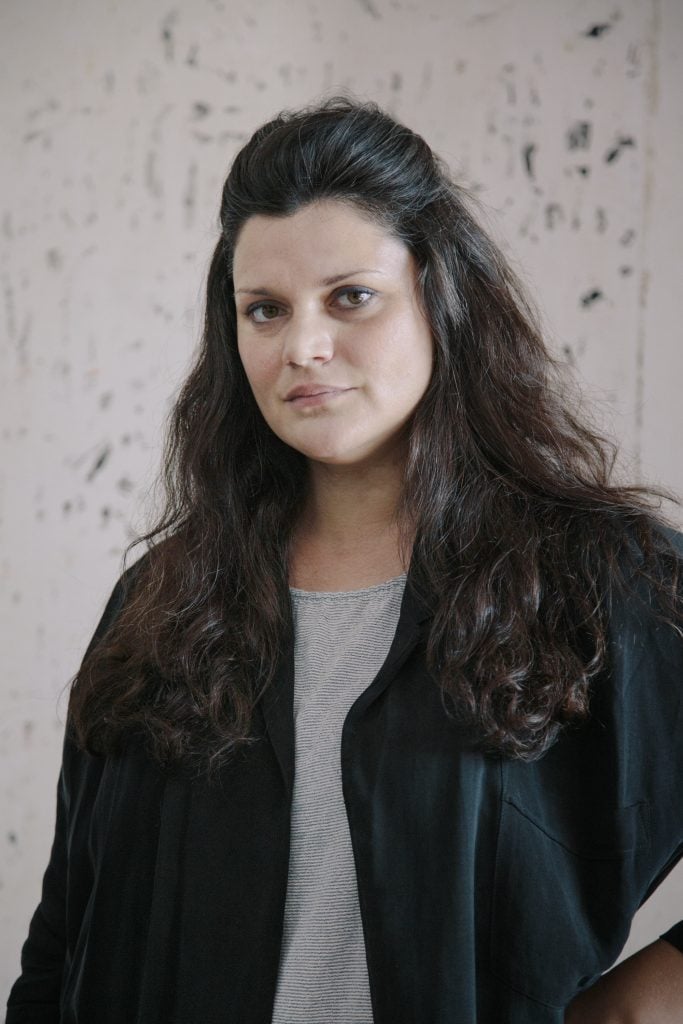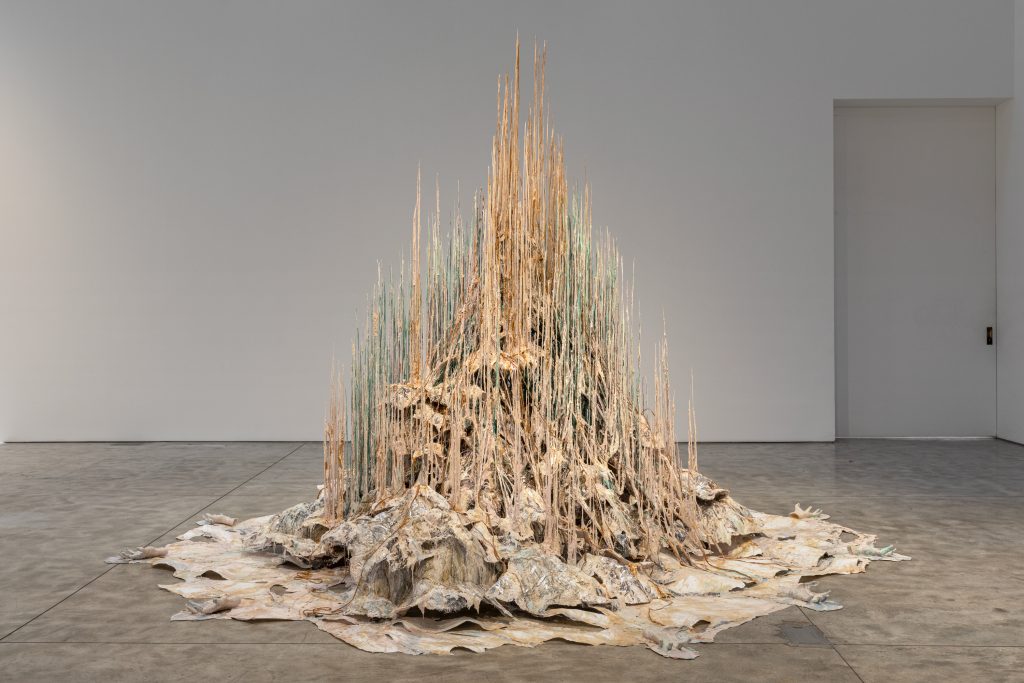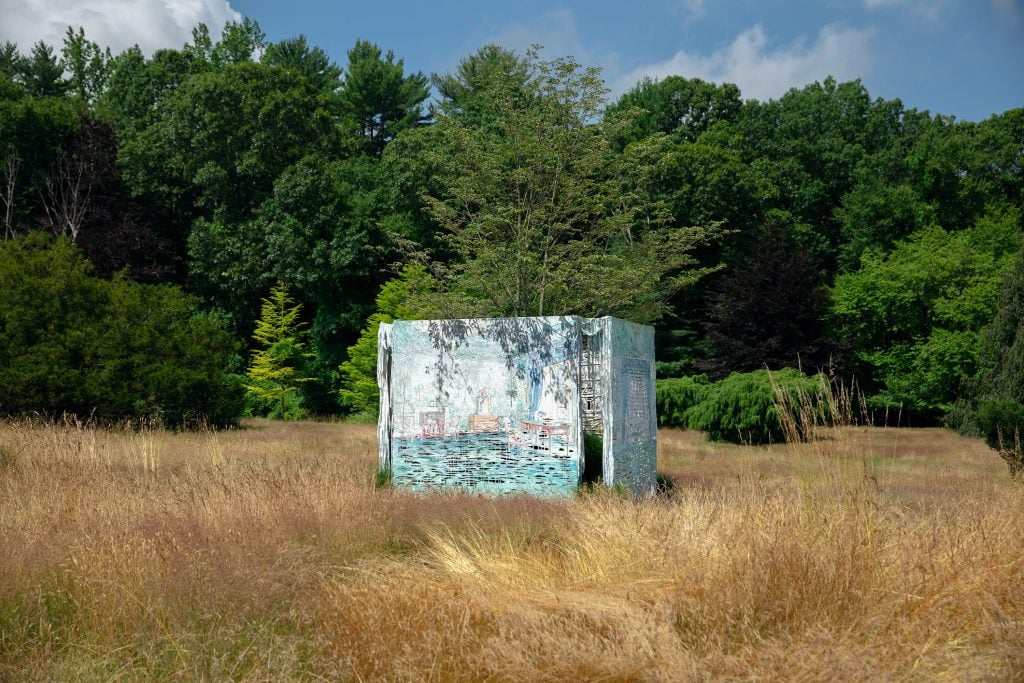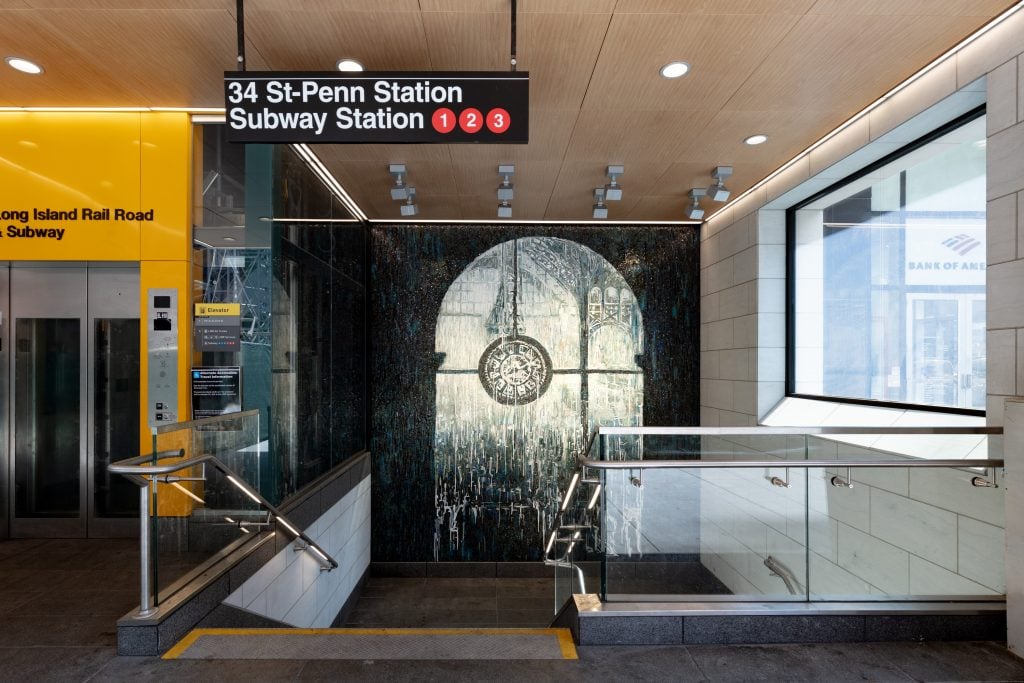Art & Exhibitions
How Medieval Art, Music, and Memory Interplay in Diana Al-Hadid’s Sculptural New Works Centered on Her Heritage
This November, the artist will have her first solo exhibition after moving to Kasmin Gallery.

This November, the artist will have her first solo exhibition after moving to Kasmin Gallery.

Katy Diamond Hamer

Syrian-born artist Diana Al-Hadid is known for her sculptures and two-dimensional artworks that transform the industrial materials of bronze, steel, fiberglass, and wood into evocative visions drawn from cosmology, cartography, folklore, and antiquity. The artist, who has lived and worked in Brooklyn for the past 16 years, has been a witness to the borough’s transformation over those years, and in many ways, her works are about time, its passage, and how that manifests in mark-making.
Today, Al-Hadid divides her time between the city and Upstate New York, where she purchased a home in 2019. Currently, she is also in the process of building a studio for that property. Al-Hadid is prolific. Currently, she is taking part in an ongoing residency with Brooklyn’s Dieu Donné, a non-profit cultural institution devoted to furthering hand papermaking processes in contemporary art. This November, the artist will present her anticipated debut exhibition “Women, Bronze, and Dangerous Things” at Kasmin Gallery in New York, showcasing a body of work over five years in the making. The exhibition, which will run from November 2 to December 22, 2023, promises to offer a selection of new work including a series of painterly wall-hanging pieces and totem-like sculptures that rise up in the same way they are planted down. Coinciding with the Kasmin exhibition, Al-Hadid will also be featured at the NGV Triennial, which opens on December 3.
Ahead of these exhibitions, we visited Al-Hadid’s Brooklyn studio, a space awash with splashed pigments, sculptural detritus, and myriad other materials, and spoke to the artist about the throughlines in her practice and the ideas and experiences at play in her newest body of work.

Diana Al-Hadid, The Long Defeat (2017–23). Courtesy of the Artist and Kasmin Gallery. © Diana Al-Hadid. All Rights Reserved.
Your work has been aesthetically consistent over the years, capturing your hand and mark-making over time. Can you talk about your interests and practice?
I often think about the glacial pace that my work has—or the long arch of materials that I’ve been working with since grad school. There are basic constructions that coincide with our contemporary world in raw form. In some ways, I think there are some formal or maybe subconscious compulsions that have remained consistent [in my practice]. I work a lot with line and plane, pours, or drips, and things that happen over time. There are metaphorical concepts that I’m interested in, that we live with as a society.
What do you mean when you say you’re interested in metaphorical concepts that we live with as a society?
There are ways that we move, shape, and mold the world. We use wood, metal, steel, and contemporary materials, yet the processes are ancient in many ways. All my work looks back at art histories, narrative histories, and common tropes—ascensions, overground and underground. We sometimes understand metaphorical concepts as a cultural construct and sometimes as a body or cognitive construct. They are all cognitive. The show’s title is “Women, Bronze, and Dangerous Things,” which is inspired by a book first published in 1987, similarly titled Women, Fire, and Dangerous Things by George Lakoff (b. 1941), an American philosopher and cognitive linguist. The book title comes from an Aboriginal dialect in Australia and is a reference to a word that describes women, fire, water, certain animals, and dangerous things. It offers an incredible shift in thinking regarding how we see the world and the language we use is intrinsically related and reinforced over and over. One of the metaphorical concepts that Lakoff explores is the notion that the unknown is up and the known is down. In the English language we might say, “What’s up?” or “It’s up in the air.” Language plays a role in how we experience our living bodies and how our society makes associations.

Diana Al-Hadid, The Outside In (2023) at the Planting Fields, New York. Photography by Diego Flores. Courtesy of Kasmin Gallery and Diana Al-Hadid. © Diana Al-Hadid. All Rights Reserved.
Something I’ve been thinking a lot about recently is the different visual experiences that people have linguistically based on their native language and other written languages that they may or may not know. For example, even saying, “What’s up?” when translated into another language, may not carry the intended meaning. These lapses in understanding can also happen when talking about spirituality.
You are hitting all of my notes. This show has some elements of religion in it, and the reason that this book resonated so deeply in my bones is because of these irregularities between cultures and minds. We always want to try and make contact, to come close to something, to understand it. I was born in Syria, my mother tongue is Arabic, and I grew up in Ohio, a very Christian, white…but loving and wonderful place. I often look at works from the Middle Ages, both Islamic and Christian. I look towards the 1550s for many of my references and keep ending up there. At this moment, post-2020, I have a kid, I’m not an emerging artist anymore, and these are facts about me. Moving upstate [at this stage of my life] I’ve learned about plants, and I’ve learned about roots, and I’ve learned about trees. I listen to Arabic music constantly. Life is such a negotiation as an immigrant; finding out how much of yourself to make public, and how much of your history to hold on to. I returned to Syria at 13 years old and I often think about what you mentioned, that approximation, that missed connection in a conversation, and how language can lend itself to poetic and cultural insights that otherwise won’t be understood. I’ve constantly been made aware of that since I didn’t grow up there, even though it is my blood. It is something I always work in reference to.
Thinking about roots metaphorically and literally, all seems to make sense with your work—things that are earthbound. Do you also think about the absence of space? How do materials inform your process?
Yes, exactly that, spaces that are immaterial. I did a stint at the Smithsonian and spent time looking at Islamic and German miniatures. They are almost like fortune-telling devices—people could read their future in them. Now I’m at Dieu Donné in an ongoing residency and working with paper pulps is a huge part of the show. I’m working with bronze and I’m working with paper. I’ve never worked with paper before, I tend to make large-scale drawings on mylar.

A longtime New Yorker, Diana Al-Hadid recently completed a permanent installation for MTA Arts & Design, The Time Telling (2023). Photography by Diego Flores. Courtesy of Kasmin Gallery and Diana Al-Hadid. © Diana Al-Hadid. All Rights Reserved.
Does this mean that before making a sculpture you don’t sketch it out first?
The sculptures start in a very casual way. There is a work that is intended for the show that is a very small piece that will be bronze. It’s jasmine roots. Jasmine is the flower of Syria and it’s very nostalgic. All of my aunts have jasmine and I had jasmine plants that died. I took what remained in the pot, the roots, and dipped them in wax and hung it. I’ve had so many plants that are root-bound and learned about how these roots would push to the edge [of a pot] and become encased. It struck me as a metaphor for the immigrant experience, these tightly wound roots where you have to learn how to grow in a new territory, new soil. It felt so core for me.
That is beautiful. The roots can be confined or allowed to spread if planted in the ground. What else can we expect from the show?
The show pulls from so many sources, but I think there are some common historical threads, including Medusa, as inspired by Greek mythology. To return to the idea that the unknown is up and the known is down, the gallery is a cavernous, nearly underground space. A stacked and towering sculpture will be installed in the main gallery, reaching upward and another will be on the roof, an ascension of sorts, an unexplained narrative.